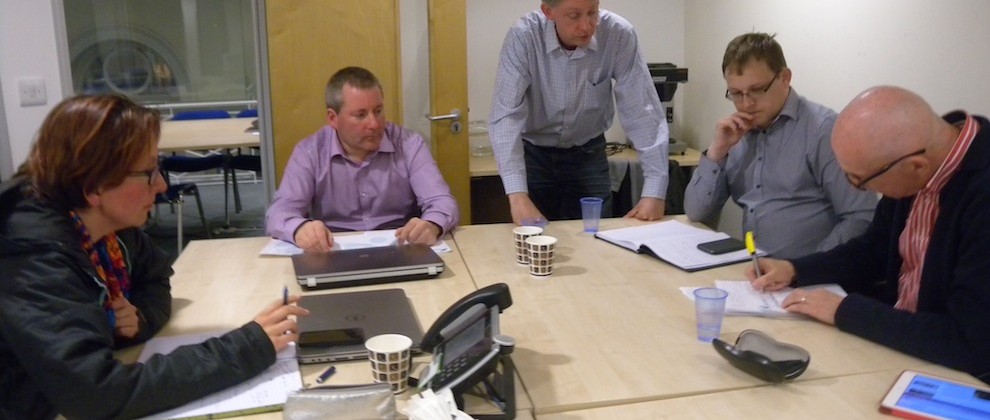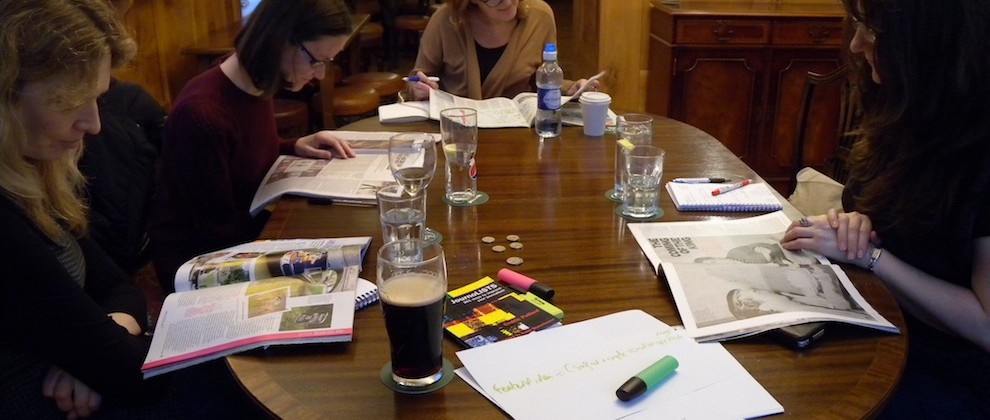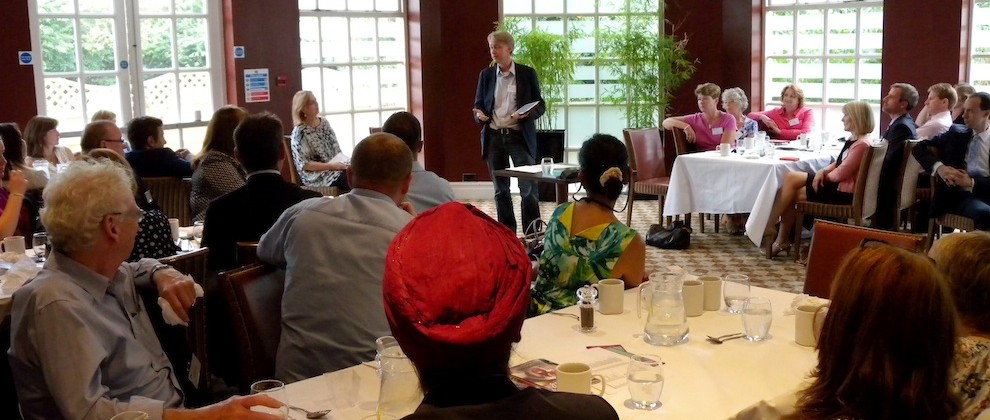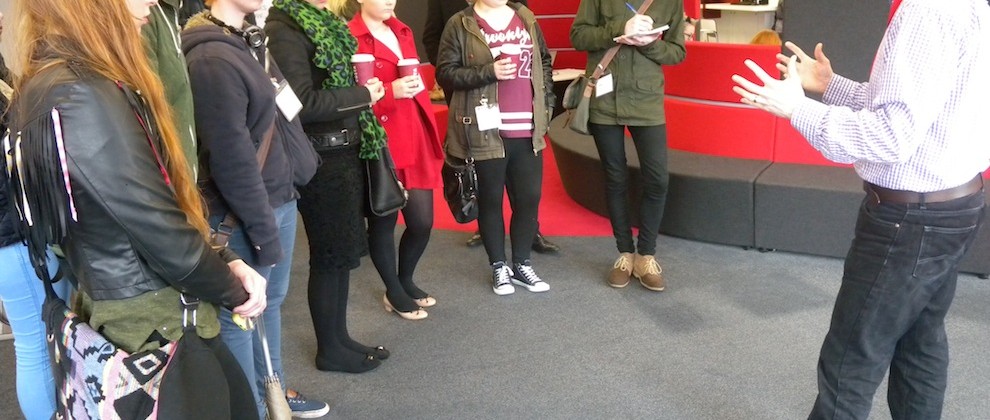
The last workshop in the current series is looming.
This is round three in the triumvirate of summer writing workshops, taking place Thursday, July 16, 7-9pm at the CHIC co-working hub in Chester.
The topic for this session is writing fab features, followed by individual tuition — bring some work-in-progress writing for the latter, or we can review your homework so far.
Meanwhile, to start us thinking about this next session, I’d like to offer up one of my recent features. Please read the following article and then share your thoughts below.
Can you spot what techniques and tricks I have used in putting this story together? What do you think worked and what would you have done differently?
And when you post, please also include a something about yourself, so we can get to know each other before the workshop and start a dialogue as a group.
Unedited copy for Family Traveller Magazine (July/Aug issue 2015)
The chicken awaited its fate. As I looked on, Maya, my elder daughter, set about carving off the thighs with a degree of caution and scalpel-like precision. Olivia, her younger sister, meanwhile, simply grabbed a razor-sharp Sabatier and started hacking away at the uncooked carcass like a toddler version of The Muppets’ Swedish Chef. No doubt Gordon Ramsay tackles similar sibling rivalries in his own kitchen.
I had come to kitchens of Meyer’s Madhus (that’s Meyer’s Food House in English) in Copenhagen’s Norrebro district for the kids’ cooking school. My two little Bake-Off fans, Maya (nine) and Olivia (four), were getting stuck into filleting the fowl while I pondered how wise it was to encourage under tens to play with extra sharp knives. But that was the whole idea. From cookery camps to after-school cooking clubs, the Copenhagen cooking school established by the top chef and Noma co-founder Claus Meyer, is all about kids making friends with food.
“Denmark has been trying to backtrack in recent years to regain its connection to nature and natural produce,” explains the school’s executive chef Bo Frederiksen. “By taking kids out of their comfort zones, our courses offer a social activity with a higher educational purpose.”
NORDIC KITCHEN
Suddenly everyone is talking about food in Denmark. The New Nordic Kitchen movement, founded by Meyer and Noma co-owner René Redzepi in 2004, has reawakened interest in foraging for seasonal, sustainable and natural ingredients. The Michelin Guide has responded by awarding Copenhagen a new record of 17 Michelin stars across 15 restaurants. The company also recently launched its first New Nordic Cities Guide, dedicated to rise of Denmark and the other Scandinavian countries as world food hubs.
But it’s not all about Michelin stars and fine dining. Contributing to the New Kitchen Manifesto that kicked started the movement, Meyer noted simply, “Kids should cook”. By raising awareness of healthy eating and encouraging kids to foster an interest in organic gastronomy from an early age, he argued, food can become part of the solution to wider social issues.
It’s theme to be developed further this summer with the tenth anniversary of the Copenhagen Cooking Festival. Northern Europe’s leading food event will stage some 150 events at venues across the city from August 21 to 30. Key events for families this year include a Cooking Kids event at Copenhagen Madhus on August 25, a Taste of Copenhagen pop-up restaurant at the Design Museum from August 26-29 and the cornerstone Arla Food Fest, staged in the much-visited King’s Garden, from August 29-30.
The Festival also offers a platform for local organisations to stage events to strengthen awareness of the burgeoning Danish food culture. There are early results. Madkulturen (The Food Culture), an organisation founded by the Danish Ministry of Food, recently reported that 67% of Danish children aged 8-15 years old now help with preparing meals at home at least once a week.
“As Danes, we have started to take pride once more in our natural produce and traditional recipes,” says Festival Director Lonnie Svarre Hansen. “But it’s kids who will now take our food culture to the next level.”
GET COOKING
In Meyer’s sleek, stainless steel kitchen, the menu of traditional Danish chicken fricassee with boiled potatoes, followed by rhubarb trifle served with cream, was being coordinated across four work stations by Head Chef Mette Strarup. Maya and Olivia put on their aprons, scrubbed their hands and prepared to see if they could stand the heat in the kitchen.
They quickly got stuck in, teaming up with a couple of 12-year-old Danish girls to happily chop vegetables, season sauces and prep the rhubarb for desert in a mix of Danish, English and hand gestures. The three-hour class was designed to take the group through the whole recipe, culminating with serving the meal like a restaurant service. I even felt a frisson of fatherly pride when, as Mette showed the class how to carve the chicken, my girls rolled up their sleeves while some of the Danish teens grumbled about handling the giblets.
“I really enjoy working with kids and seeing their confidence grow, both in terms of their social skills and their interest in food,” Mette tells me over a brief coffee break. “This is not school, I tell them. We’re all professionals now.”
FAMILY ATTRACTIONS
Away from the kitchen, we also sampled lots of Copenhagen’s family-foodie hangouts during a long weekend in the Danish capital. On the first day we went for lunch at the newly opened Copenhagen Street Food, the Borough Market-style collection of food trucks and pop-up kiosks located in the northeastern Paper Island district between the Copenhagen Opera House and the Experimentarium City science museum. We tucked into organic Danish hotdogs and traditional potato-based open sandwiches amid an eco-buzz ambiance of recycled stalls and giant cushions around a warming giant pizza oven.
We spent the next day at the Tivoli Gardens, the historic theme park dating from 1843, making a beeline for Hans Christian Andersen’s Flying Trunk. The girls loved the ghost train-style ride through Andersen’s timeless fairytales, watching some of their favourite stories, such as The Princess and the Pea, come to life before our eyes as we trundled through in little carriages. Afterwards, we went for lunch at the newly opened Spisehuset restaurant in Tivoli, tucking into a picnic-basket-style lunch washed down with bottles of our new favorite Scandi pop drink, Faxe Kondi. The girls loved the restaurant’s playroom and the soundtrack of tweeting birds provided a soothing backdrop to lunch after the cacophony of spinning round on the Galley Ships ride beforehand.
But, food aside, how child friendly did Copenhagen prove to be? Nearly everyone speaks English and the infrastructure for families is good. We could eat early evening to avoid overtired late nights and most of the restaurants we visited seemed unfazed by an inquisitive four year old on the prowl. On the downside, however, it’s not the cheapest place for a city break and navigating the bus network to crises-cross the sprawling districts can be quite challenging, especially as a single parent with two young children and our luggage in tow. It was noticeable that nobody on the bus ever gave up a seat but as one Danish later friend said to me: “It’s a Viking thing. The Vikings always just did what they wanted.”
DINNER IS SERVED
Back in the kitchen, things were hotting up. With 30 minutes to complete the two-course meal, Maya was busily adding lemon juice to the simmering rhubarb while Olivia helped head chef Matte to thicken the sauce for the chicken. Across the kitchen, 12-year-old Tobias, a veteran of several cookery classes, was chastising his team of three teenage boys for burning the butter with a fiery flourish worthy of the young Marco Pierre White.
“Yes, I’d like to be a chef,” he said, taking a temper-cooling breather on the terrace outside. “I love to cook and I love to eat. So why not?”
Just like a scene from the kitchen at Noma, however, the service came together at the last moment and we all sat down to eat around a large, communal table, toasting our success with glasses of organic juice. Maya and Olivia agreed that, while they may have different approaches to carving the chicken, an afternoon of intensive training in the art of the New Nordic Kitchen had left them feeling more inspired and confident to help with the dinner back home.
As part of the Copenhagen Cooking Festival, Meyer’s Madhus is helping with two events: the Food Courage Run, an assault course-style treasure hunt with a food theme on August 29; The Hour of Taste is a kids-only night with special menus for ages 5-15 at various restaurants around the city, including some Michelin-starred eateries. Profits from these will go back into its social-conscience charitable foundation Melting Pot, which aims to improve the quality of life of vulnerable groups through food craftsmanship.
“My grandmother was from rural Denmark the smell of homemade bread baking in the oven is one of my strongest childhood memories,” smiles Bo, as we polished off the last of the creamy, citrus-tangy desert.
“Passing our traditional cookery skills down the generations had lost its way,” he added. “But we’re starting to bridge the gap again. Kids see cookery as a social activity once more and, through food, they’re changing their view of the world.”
ENDS



